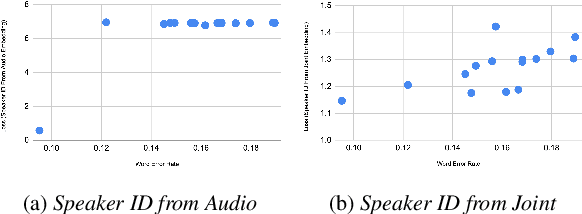Ronny Huang Andrew Rosenberg Tara N. Sainath
Towards Disentangled Speech Representations
Aug 28, 2022



Abstract:The careful construction of audio representations has become a dominant feature in the design of approaches to many speech tasks. Increasingly, such approaches have emphasized "disentanglement", where a representation contains only parts of the speech signal relevant to transcription while discarding irrelevant information. In this paper, we construct a representation learning task based on joint modeling of ASR and TTS, and seek to learn a representation of audio that disentangles that part of the speech signal that is relevant to transcription from that part which is not. We present empirical evidence that successfully finding such a representation is tied to the randomness inherent in training. We then make the observation that these desired, disentangled solutions to the optimization problem possess unique statistical properties. Finally, we show that enforcing these properties during training improves WER by 24.5% relative on average for our joint modeling task. These observations motivate a novel approach to learning effective audio representations.
 Add to Chrome
Add to Chrome Add to Firefox
Add to Firefox Add to Edge
Add to Edge